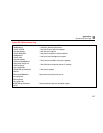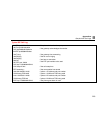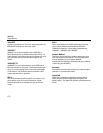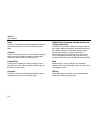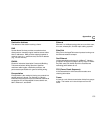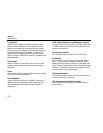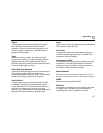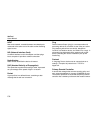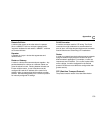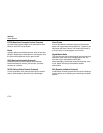
Appendices
C
C-3
ARP (Address Resolution Protocol)
A member of the TCP/IP protocol suite, ARP is the
method by which a station’s MAC address is determined
given a station’s IP (Internet Protocol) address.
Attenuation
A reduction in the strength of a signal; the opposite of
gain.
Bandwidth
Bandwidth is the rate at which data can be transmitted
over a channel, measured in bits per second. For
example, Ethernet has a 10 Mbps bandwidth and FDDI
has a 100 Mbps bandwidth. Actual throughput is almost
always less than the theoretical maximum.
BPS
Bits per second. A measure of speed or raw data rate.
Often combined with metric prefixes as in kbps (for
thousands of bits per second) or Mbps (for millions of bits
per second).
Bridge (Switch)
A device that links two or more networks that use the
same OSI Data Link protocol. A bridge evaluates source
and destination addresses to pass only frames that have
a destination on the connecting network.
Broadcast
A message that is addressed to all stations on a network.
For Ethernet networks, the MAC broadcast address is
FFFFFFFFFFFF.
Broadcast Storm
A situation in which a large number of stations are
transmitting broadcast packets. This typically results in
severe network congestion. This problem is usually a
result of a misconfiguration.
Bus Topology
A bus topology is a network architecture in which all of
the nodes simultaneously receive network traffic. Ethernet
is a bus topology.
Byte
A collection of bits. A byte usually contains 8 bits.
Characteristic impedance
Characteristic impedance is the opposition (resistance
and reactance) to signal propagation on a cable. It
depends on the physical properties of a cable, which are
determined at the time of manufacture. Manufacturing
variations can cause slight differences in characteristic
impedance for the same cable type.





